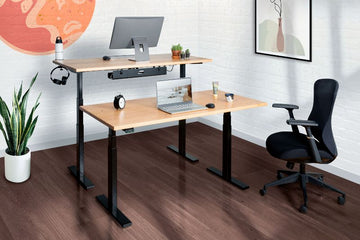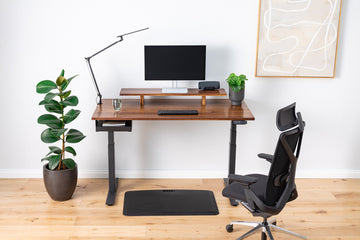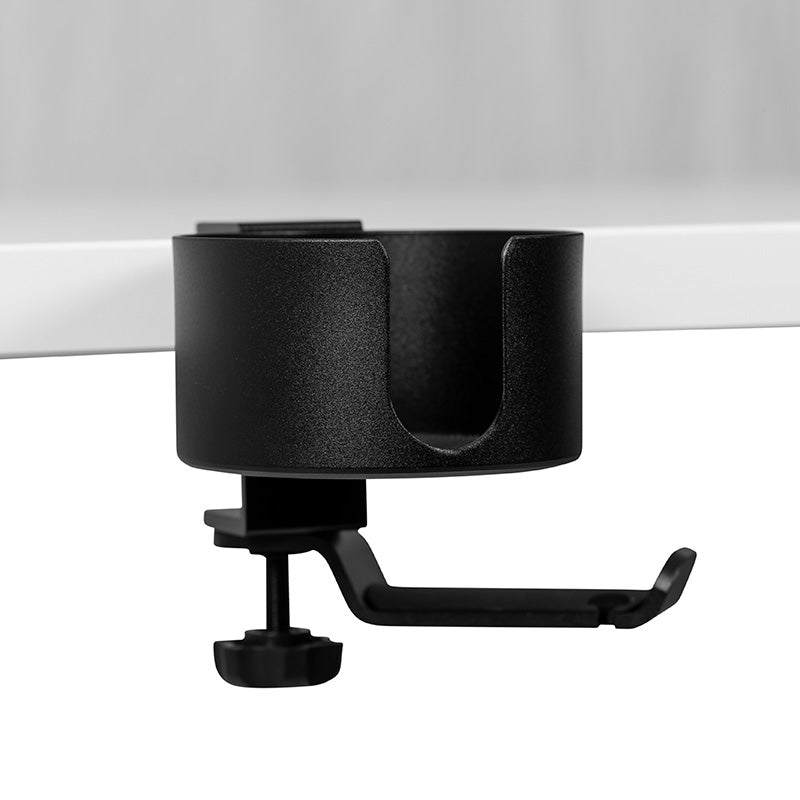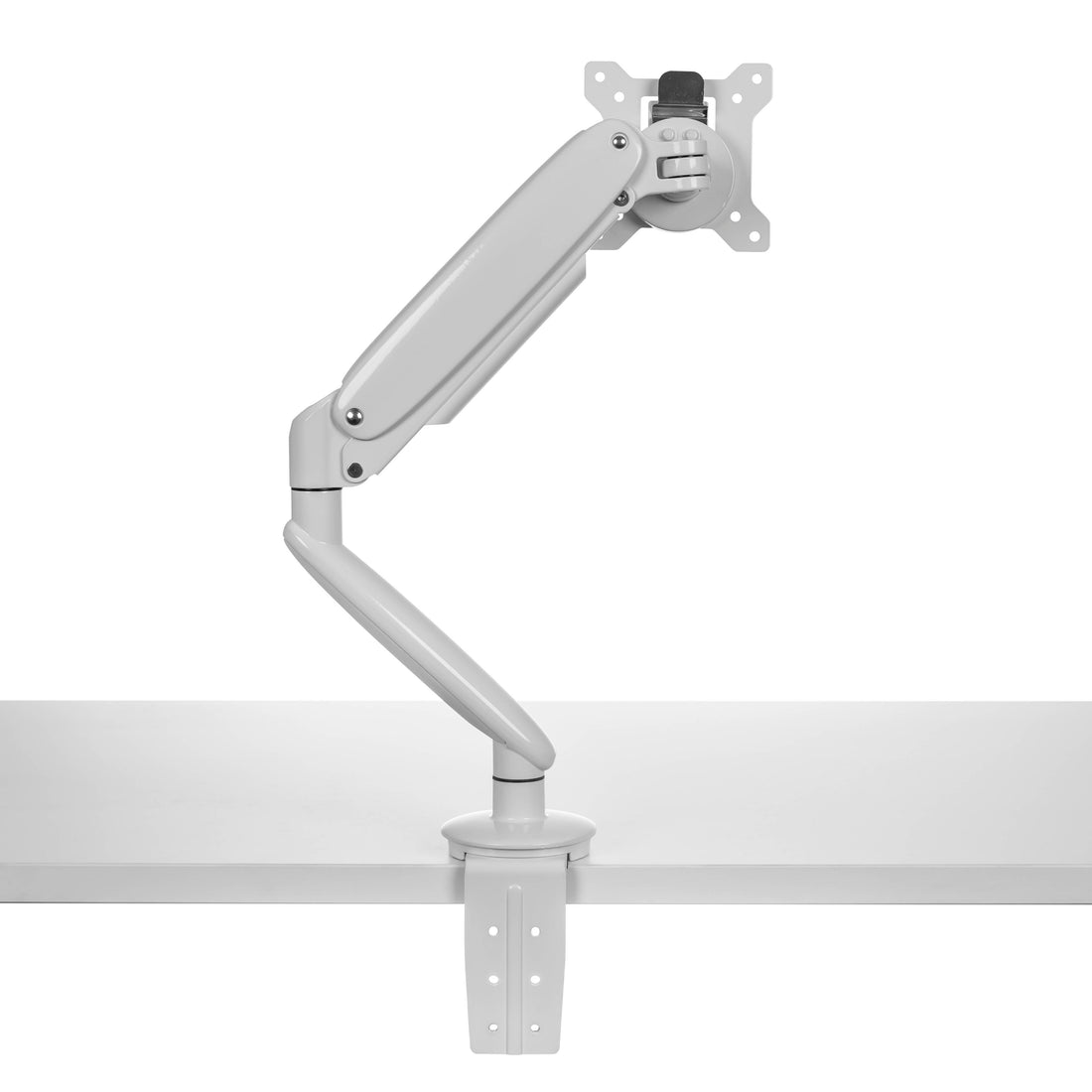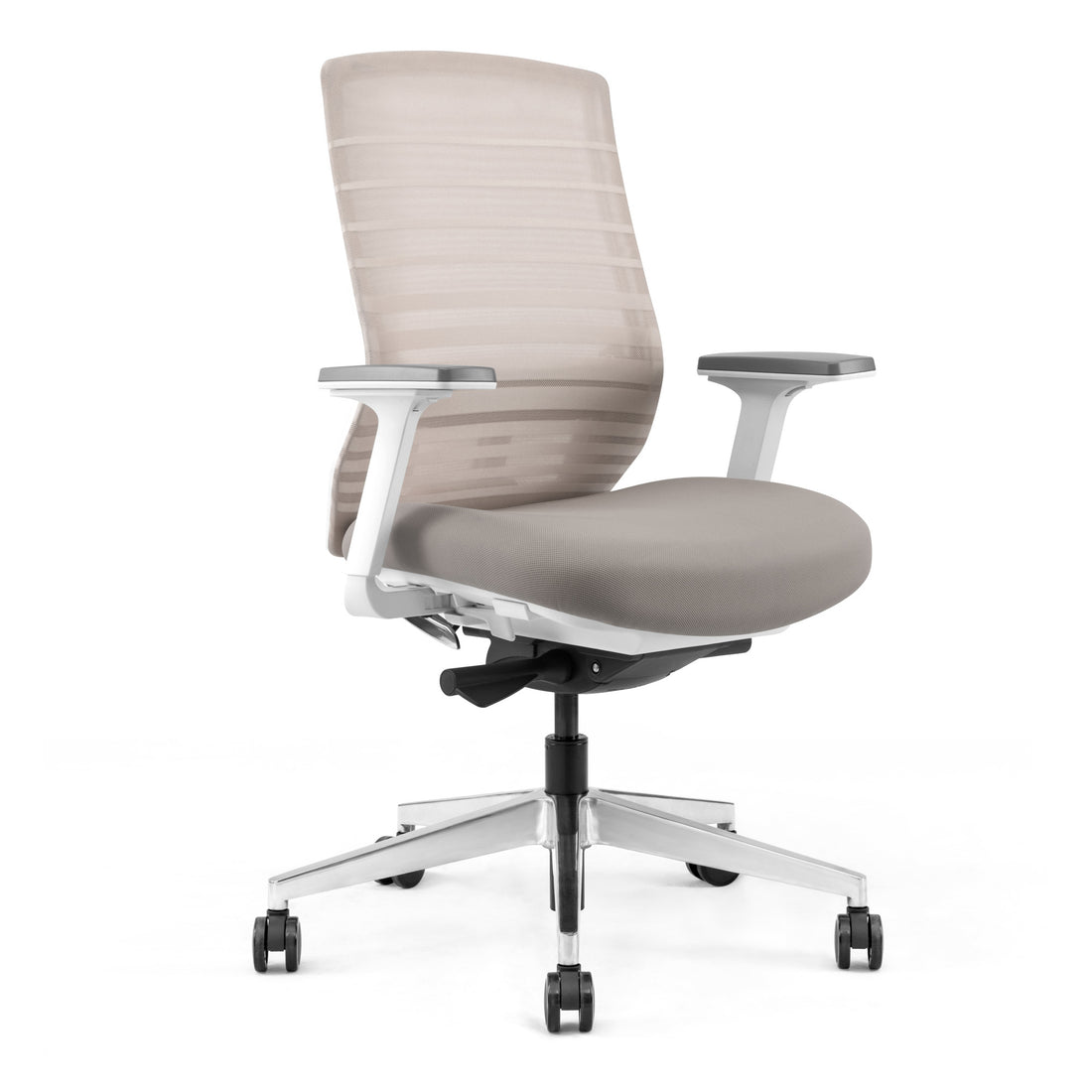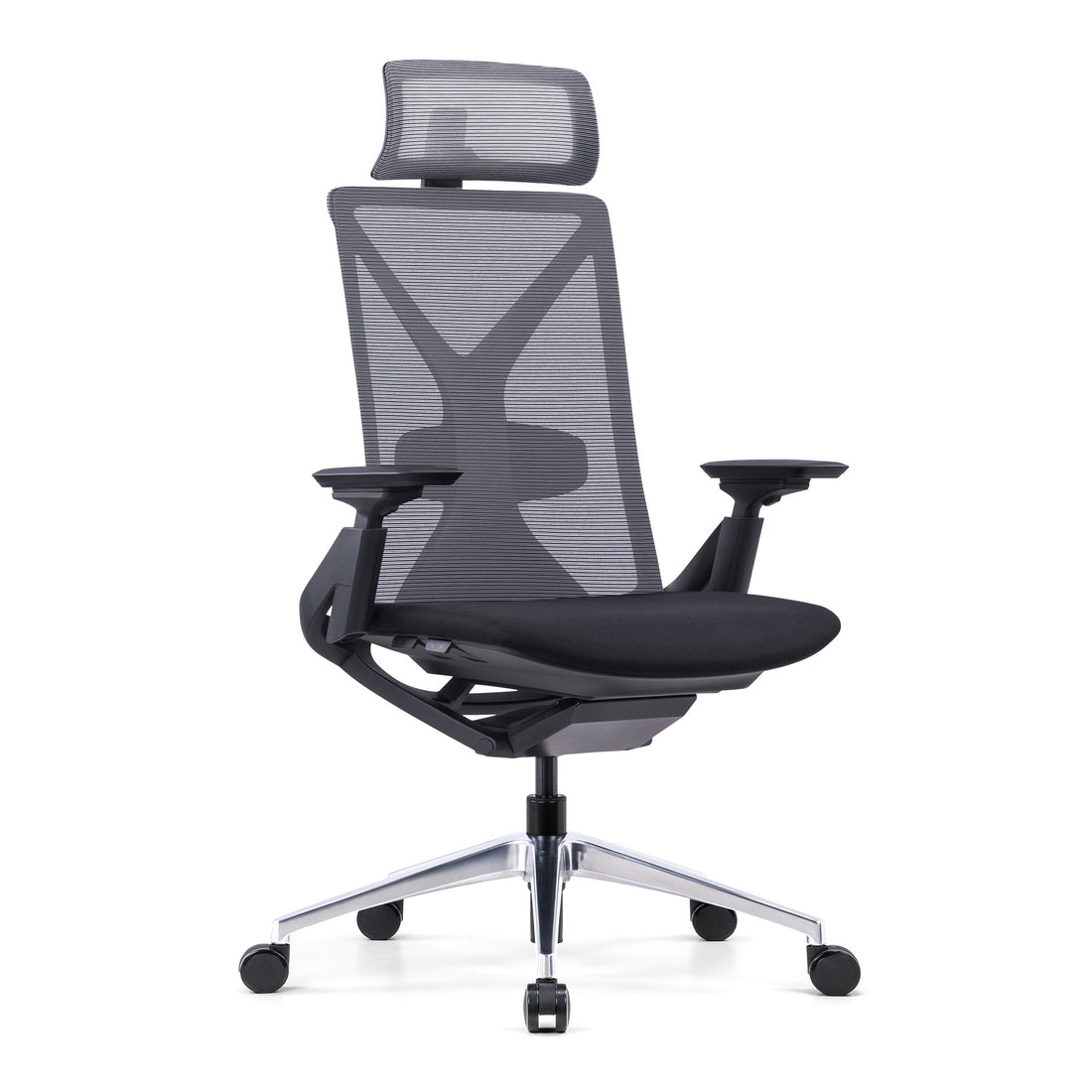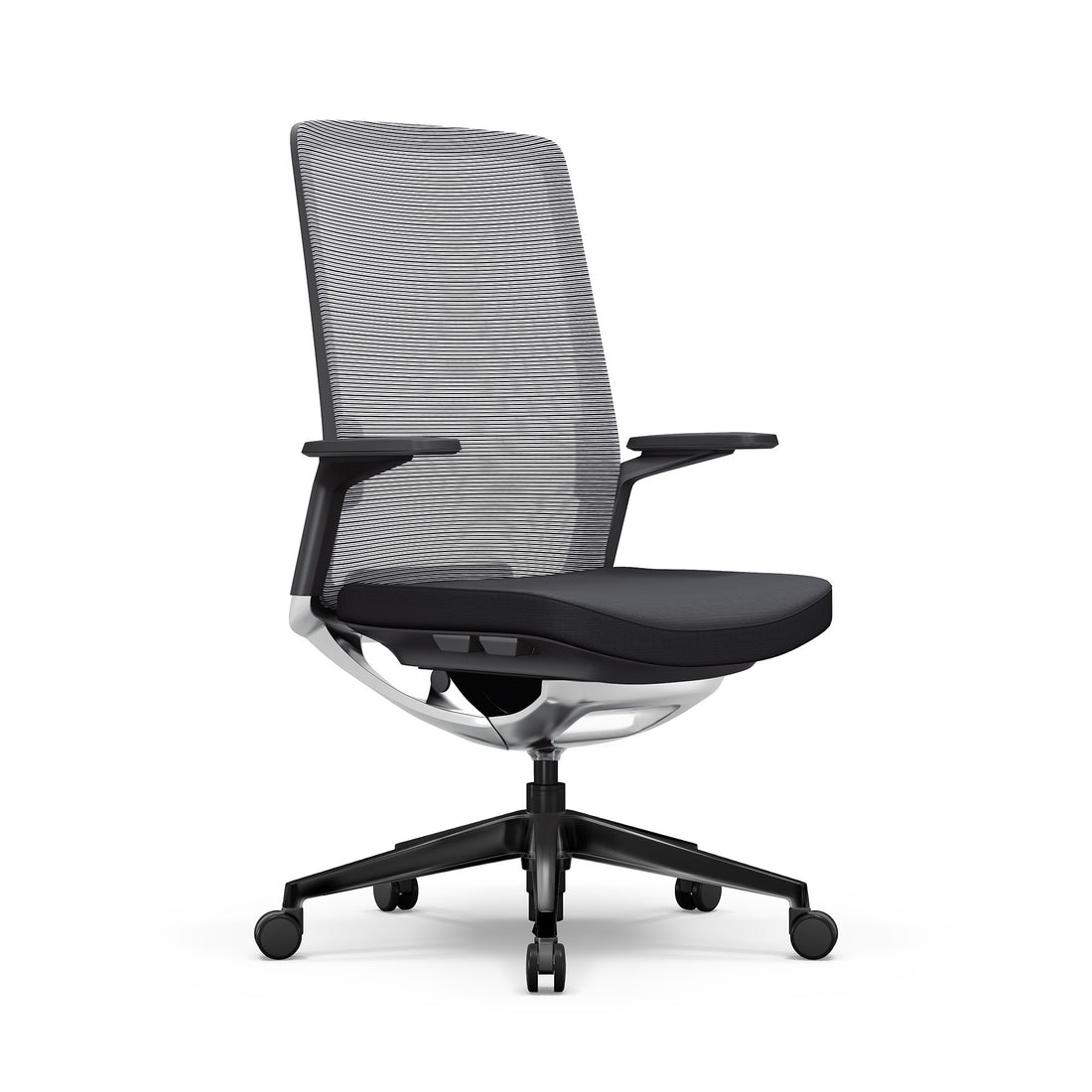Creating an optimal desk setup with a laptop and monitor can drastically improve your work experience, productivity, and overall well-being. Whether you're working from home, designing a professional office, or simply upgrading your current workspace, establishing a well-organized and ergonomic environment is crucial.
In today's digital age, many people are finding that incorporating features like adjustable standing desks or standing desk converters can significantly enhance their workspace comfort. This comprehensive guide will explore the numerous benefits, versatile options, and essential best practices for setting up your desk with both a laptop and a monitor. Learn how to create a workspace that meets your functional needs and promotes a healthier and more productive work routine, ensuring you optimize every aspect of your desk setup for optimal performance and comfort.
Benefits of Using Laptop and Monitor Setups
Integrating both a laptop and a monitor into your workspace offers several benefits that can enhance your productivity and comfort. Here are some key advantages to consider:
- Increased Productivity: Working with multiple screens allows for better multitasking. You can have your email open on one screen while working on a document on the other. This setup reduces the need to constantly switch between tabs, saving time and increasing efficiency
- Enhanced Comfort: Proper setup minimizes strain on your neck, back, and eyes. By positioning your monitor at eye level and using a laptop stand, you can maintain a more natural posture, reducing the risk of developing musculoskeletal issues
- Better Organization: A dual-screen setup helps you keep your workspace organized. You can use one screen for your main tasks and the other for reference materials, communication tools, or entertainment, keeping everything you need within easy reach
- Flexibility and Adaptability: Whether you’re working on detailed tasks that require a lot of screen space or collaborating with colleagues over video calls, a laptop and monitor setup provides the flexibility to adapt to various work requirements.

Choosing the Right Desk and Chair for Setups with Laptop and Monitor
Appropriate desks and chairs are fundamental to creating an ergonomic and productive workspace. Your desk should offer ample space and support for both your laptop and monitor, while your chair should provide comfort and adjustability.
Benefits of Standing Desk for Laptop and Monitor Setup
Standing desks offer versatility and numerous health benefits. They allow you to alternate between sitting and standing, promoting better posture and reducing the risk of sedentary lifestyle-related issues.
Improved Posture: Standing desks encourage an upright posture, reducing back and neck pain. By allowing you to change positions throughout the day, these desks help to alleviate the stiffness and discomfort associated with prolonged sitting.
Increased Energy Levels: Alternating between sitting and standing can boost energy and focus. Standing while working increases alertness and reduces fatigue, leading to better overall productivity.
Caloric Burn: Standing burns more calories than sitting, which can contribute to weight management and overall health. Even small amounts of additional movement throughout the day can add up over time, promoting a healthier lifestyle.
Different Desk Setups with Laptop and Monitor
Depending on your needs and space, there are various ways to arrange your laptop and monitor setup. Some of the most popular configurations that we will discuss are:
- Side-by-side monitor setup
- Stacked monitor setup
- Docking station setup
- L-shaped desk setup
The side-by-side setup is a common choice where both the laptop and monitor are placed next to each other. This configuration is ideal for tasks that require constant switching between screens. It is excellent for multitasking, allowing you to keep multiple applications open simultaneously without having to frequently toggle between tabs. This setup works particularly well if you have ample desk space and must manage several tasks simultaneously.
Another option is the stacked setup, where the monitor is placed directly above the laptop. This arrangement saves desk space and improves eye-level alignment, making it beneficial for small workspaces. By elevating the monitor, you can maintain an ergonomic viewing angle, which reduces strain on your neck and shoulders. This setup is ideal for those who want to maximize their vertical space and keep their desk organized.
The docking station setup is an excellent choice for those who need to connect multiple peripherals. A docking station allows you to connect your laptop to additional devices such as external hard drives, keyboards, and mice, transforming your laptop into a desktop-like experience. This setup is perfect for users who require a more extensive range of connectivity options and need to expand their workspace capabilities without sacrificing portability.
Lastly, the L-shaped desk setup offers ample space for a laptop, monitor, and additional accessories. This configuration is perfect for creating a dedicated work area that can accommodate various tasks and projects. The L-shaped desk provides plenty of surface area for spreading out documents, placing office supplies, and adding personal touches to your workspace. It is ideal for those who want a comprehensive and organized work environment supporting multiple functions and activities.
Each setup offers unique benefits and can be tailored to your specific needs and preferences. Whether you prioritize multitasking, ergonomic alignment, connectivity, or ample space, there is a laptop and monitor setup that can help you create an efficient and comfortable workspace.
Desk Layout and Organization with Laptop and Monitor
Organizing your desk is key to optimizing productivity and fostering a pleasant work environment. Implementing effective organization strategies can streamline your workflow and reduce distractions.
Start by managing cables with dedicated organizers such as clips and sleeves, ensuring they are neatly arranged to prevent tangling and maintain a clean desk surface. Elevate your monitor to eye level using adjustable stands or mounts, including desk risers, which not only enhance ergonomics but also reduce strain on your neck and promote comfortable viewing angles. Adjust these stands to find the perfect height and angle that suits your preferences and workspace setup.
Desk trays and organizers are invaluable for keeping essential items like pens, notepads, and office supplies within easy reach. Utilizing these tools can declutter your workspace and maintain a focused environment conducive to productivity. Lighting plays a crucial role in creating a comfortable atmosphere. Opt for desk lamps equipped with adjustable brightness and color temperature settings, allowing you to customize the lighting to suit different tasks and times of day. Proper lighting reduces eye strain and enhances overall visual comfort during extended work sessions.
Incorporating ergonomic accessories such as wrist rests, footrests and keyboard trays further enhances working comfort and support. These accessories help alleviate strain on your wrists, shoulders, and back, promoting better posture and reducing the risk of repetitive strain injuries. Investing in ergonomic solutions tailored to your needs can significantly improve your comfort and efficiency throughout the workday.
An organized and ergonomic workspace is essential for maximizing productivity and minimizing stress. By arranging your desk setup effectively and integrating ergonomic principles, you create an environment that supports your well-being and enhances your ability to focus on the tasks at hand. Embrace these tips to create a workspace that meets your practical needs and enhances your overall work experience.

Multi-Functional Desk Accessories
Incorporating multi-functional accessories can optimize your workspace and enhance efficiency. Adjustable laptop stands offer the flexibility to adjust height and angle, improving ergonomics and reducing strain on your neck and shoulders.
An external keyboard and mouse setup enhances typing comfort and reduces strain, especially with wireless options that minimize desk clutter.
Docking stations are invaluable for transforming laptops into desktop workstations. They provide additional ports and connectivity options for multiple devices and peripherals.
Monitor arms offer flexibility in positioning your screen, allowing adjustments in height, angle, and distance to maintain an ergonomic setup while freeing up valuable desk space.
Personalizing Your Laptop and Monitor Desk Setup
Personalizing your workspace is essential for creating a more enjoyable and productive environment. Adding decorative items like plants, photos, or artwork can instantly transform your workspace into a welcoming area that boosts your mood and makes it feel inviting. Choose a color scheme that reflects your personal style and promotes a calm, focused atmosphere; colors such as blues, greens, and neutrals are known to enhance creativity and concentration.
Incorporate comfort items such as wrist rests, ergonomic chairs, and footrests to reduce strain and improve overall comfort during long work hours. Arrange your desk layout thoughtfully to optimize your workflow—keep frequently used items within easy reach and maintain an organized space to enhance efficiency.
Create an inspiration board with motivational quotes, images, and goals that inspire you throughout the day. This visual reminder can help you stay focused and driven, turning your workspace into a place where productivity thrives and creativity flourishes. By personalizing your workspace, you customize it to your preferences and create a space that supports your well-being and success.

Creating an Ergonomic Desk Setup for Home Offices with Laptop and Monitor
An ergonomic desk setup is essential for maintaining both health and productivity, especially in a home office environment where hours of sitting and computer use can take a toll on your body. Proper ergonomics focuses on optimizing your workspace to reduce physical strain and discomfort while enhancing efficiency.
Start by ensuring your monitor is positioned correctly. The top of your screen should be at or just below eye level to prevent neck strain. Utilize a monitor stand or adjustable arm to achieve this optimal height. A well-positioned monitor not only reduces neck strain but also promotes better posture throughout your workday.
Next, consider your chair. It should provide adequate support for your lower back and allow your feet to rest flat on the floor. Look for an ergonomic chair with adjustable features such as height, lumbar support, and armrests. These adjustments allow you to customize the chair to fit your body's unique needs, promoting comfort and reducing the risk of back pain or discomfort.
Keyboard and mouse placement is crucial for minimizing wrist strain. Keep them at a height where your elbows form a 90-degree angle when typing. Ergonomic keyboards and mice can further enhance comfort by supporting natural wrist positions and reducing repetitive strain injuries.
Desk height is another factor to consider. Ensure your desk allows for a comfortable typing position with your forearms parallel to the floor and wrists in a neutral alignment. If your feet do not comfortably reach the floor when seated, consider using a footrest to maintain proper posture and reduce strain on your lower back and legs.
Incorporating regular breaks and movement into your work routine is crucial for minimizing the risk of musculoskeletal issues. Stand up, stretch, and walk around periodically to keep your body active and prevent stiffness from prolonged sitting. These breaks refresh your mind, promote circulation, and reduce fatigue.
By prioritizing ergonomic principles in your home office setup, you create a workspace that supports your physical health and enhances productivity. Investing in ergonomic furniture and accessories tailored to your needs can significantly improve your overall well-being and work performance. Adjust your workspace to fit your body, and you'll reap the benefits of a more comfortable and efficient work environment.
Productivity and Setup Tips with Dual Screens
Maximize your productivity with these tips for using a dual-screen setup effectively. Start by distributing tasks between your screens: designate one for primary tasks and the other for reference materials or communication tools. This arrangement keeps essential information visible while you focus on your main work. Align your screens to minimize head movement and eye strain; choose a setup that suits your preference and desk space, whether side by side or stacked vertically.
Use keyboard shortcuts to switch seamlessly between screens and applications, optimizing efficiency by saving time on common tasks. Ensure both screens have identical resolutions and display settings for a consistent viewing experience, reducing eye strain and facilitating smooth window transitions. Position your primary screen directly in front of you and the secondary screen to the side, allowing easy access without straining your neck.
Invest in adjustable monitor stands or arms to achieve the perfect height and angle for each screen. Proper positioning enhances comfort and reduces strain on your neck and shoulders over prolonged use. Keep your workspace organized with desk trays, cable organizers, and storage solutions to minimize clutter, promoting a clear and focused environment conducive to productivity.
Lighting is crucial; ensure your workspace is well-lit to reduce eye strain. Use task lighting or adjustable desk lamps to provide adequate illumination tailored to your dual-screen setup.
By implementing these strategies, you can create an ergonomic and efficient workspace that enhances your workflow and productivity. Whether for work or creative endeavors, optimizing your dual-screen setup improves your overall work experience and minimizes physical strain, allowing you to focus on tasks with comfort and ease.
Conclusion
Setting up your desk with a laptop and monitor can significantly enhance your productivity and comfort. By choosing the right desk and accessories, organizing your workspace, and maintaining ergonomic practices, you can create an efficient and enjoyable work environment. Remember to personalize your setup to suit your preferences and needs, and take regular breaks to stay active and healthy. With these tips, you can optimize your workspace for maximum efficiency and comfort, whether you're working from home or in a professional office.

